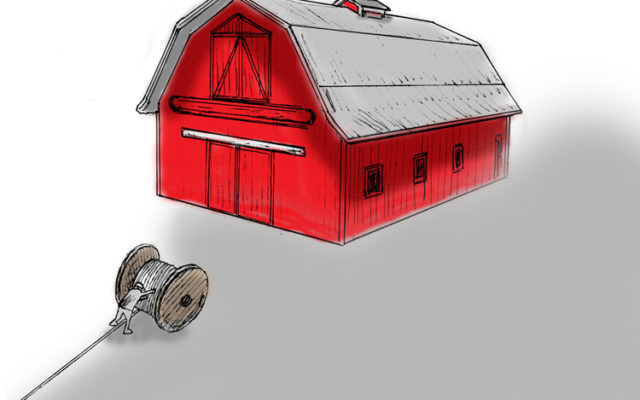
COVID crisis highlights urgent need for rural broadband
In cities and towns across Maine, school and office closures have forced hundreds of thousands of students and workers to stay home and move their daily lives online. Doctors across the state have been given new leeway to consult with patients over FaceTime, Skype or Zoom. Broadband access has become a lifeline during this public health crisis.
But for rural Mainers whose communities still don’t have access to high-speed broadband, telecommuting, remote learning and telehealth aren’t easy options. These unserved communities have been at a disadvantage for years, but the consequences of this rural broadband gap are even more dire during this stay-at-home order.
Congress has scrambled to pass massive, bipartisan emergency bills over the past few weeks to address the pandemic and the resulting economic crisis. But the federal government also needs to recognize the urgency of expanding access to broadband to every corner of rural America. Funding for rural broadband expansion — along with some smart reforms to ensure we achieve this goal as quickly as possible — must be included in the next round of stimulus legislation.
I served in Congress during our country’s last economic crisis, brought on by the financial system’s collapse in 2008. We responded with the American Recovery and Reinvestment Act, a landmark economic stimulus bill with more than $7 billion in funding, which included broadband infrastructure projects.
Here in Maine, the broadband funding secured through those stimulus programs proved transformational. I was proud to help secure more than $25 million in federal stimulus funding, which paired with investment from the private sector helped build the 1,100-mile long “Three Ring Binder” network across rural Maine, which was completed in 2012.
While nearly $2 trillion in private investment from broadband providers, along with billions in public subsidies, has brought world-class broadband service to 95 percent of homes across the country, our rural broadband challenge is far from met. Connect Maine, our state broadband authority, estimates that more than 80,000 addresses across our state still aren’t served by high-speed broadband networks. That leaves too many workers unable to telecommute, students unable to remotely keep up with their classwork and veterans unable to access the VA’s increasingly popular telehealth services, which were used by more than 900,000 veterans across the country last year.
While federal broadband programs are critical to tackling this challenge, we owe rural Americans — and all taxpayers, for that matter — an honest conversation about where these programs have fallen short of their goals. And we need to take the lessons we’ve learned over the past 11 years to make sure the next round of federal broadband projects is more effective and more efficient, so rural homes and businesses get connected as quickly as possible.
Here are a few ideas on where to start:
First, we can’t let special interests hijack these federal broadband programs to steer all the funding toward their preferred solutions. Some lobbyists will insist wireless hotspots are the best emergency solution for families without home broadband. Other voices will argue municipal-owned networks are best, or that unused TV “white space” frequencies are the silver bullet. I’ve had a front-row seat to how the sausage gets made in these bills — there’s always a long line of lobbyists and professional advocacy groups trying to tilt the fine print in their own direction.
But rules that restrict who can help solve the problem don’t actually help solve the problem.
It’s not the government’s job to put its thumb on the scale for any particular company or industry — instead, we need to let everyone onto the field to help solve this urgent challenge as quickly as possible. Connecting every rural Mainer to broadband will require an “all of the above” solution.
Second, we need to improve oversight and accountability. While Maine’s experience with broadband stimulus included big success stories, too many communities elsewhere in the country had more frustrating experiences with those programs and more than 40 percent of the broadband programs initially approved by the U.S. Department of Agriculture’s Rural Utility Service never got started at all. Better safeguards and more transparency can ensure we avoid repeating those mistakes.
Third, we need to cut red tape to ensure that federally funded broadband projects get started — and get finished — as quickly as possible. For example, Congress could streamline the building process by creating a single set of nationwide rules and rates to govern how broadband providers can string their cable on utility poles in rural areas. That’s a much faster approach than requiring providers to negotiate pole-by-pole for every new project.
Connecting every home, business and farm in rural Maine is a big challenge. But it’s a challenge we can solve, if Congress commits to giving us the resources needed to get the job done.
Mike Michaud served as the U.S. Representative for Maine’s 2nd Congressional District from 2003 to 2015.